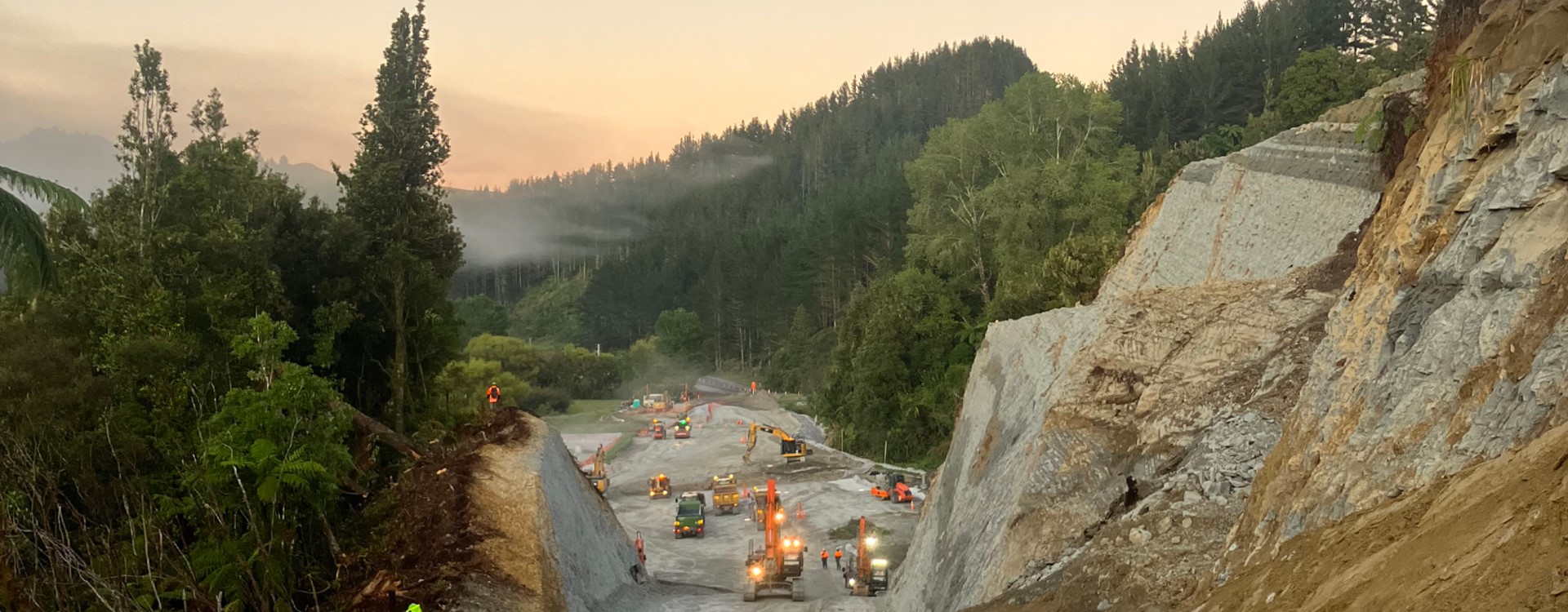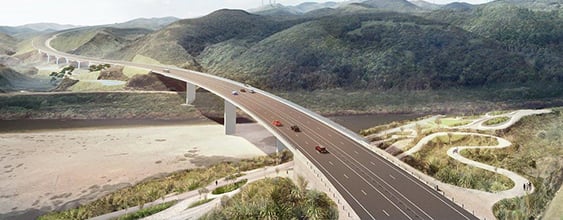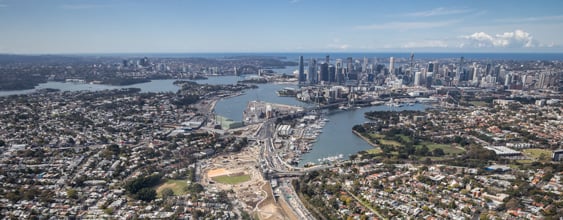
Mt Messenger Bypass
Location
- Taranaki, New Zealand
Client
- Waka Kotahi NZ
Project Value
- $200 million
Project Partners
- The Mt Messenger Alliance brings together Waka Kotahi NZ Transport Agency, Downer, HEB Construction, Tonkin & Taylor, WSP, Holmes Consulting and Isthmus.
Of all the large infrastructure projects I’ve been fortunate enough to work on, the outstanding attention to environmental and cultural outcomes has been a career highlight. This is credit to the shared vision of the Alliance team and all the people that made this happen
The new $200 million bypass with a bridge and a tunnel will provide a faster route with a lower and less steep gradient through the Mt Messenger section of State Highway 3 north of New Plymouth.
It passes through steep and inaccessible terrain that has presented considerable design and construction challenges.
Glenn Coppard, WSP Technical Principal -Transport Design, coordinates the Digital Engineering aspects of the project and says the virtual insights achieved through technology have been invaluable.
He says the use of virtual 3D Computer Models and physical 3D Printed Models have been of huge benefit to ensure all parties involved in the process have a similar understanding of the constraints and extents of the proposed works.
“Technology has played a key role in ensuring everyone has the same view of the project, it provides a level playing field. On Mt Messenger, digital engineering tools have allowed us to manage the earthworks footprint in a way that wouldn’t have been possible in the past. It also bridges the gap between paper and reality.”
For example, Glenn says that when cut backs were viewed on paper it was obvious that they were steep, but it wasn’t until they were viewed in 3D that the team realised how deep they went. That insight provided value to the design of the construction, saving time and mitigating risk.
A key focus of the Mt Messenger project is to reduce the risk of harm to native wildlife during and after construction of the road. As a result, the project includes a substantial environmental programme that includes intensive, multi-species pest management over an area of 3,650 ha and restoration planting.
Within this work a team of 25 ecologists from the Mt Messenger Alliance broke new ground in gathering information about the habitat of long-tailed bats, a critically endangered species, during field work in 2018/2019 breeding season.
WSP ecologists Doug Bridge, Caitlin Dodunski, Mark Yungnickel and Lance Robison were part of the 25-strong team who worked all hours to trap and track bats using a range of techniques including thermal imaging cameras.
Doug Bridge says working in the Mt Messenger forest has presented some unique challenges - as well as unexpected delights.
“We camped out, which isn’t typical for most of our projects. I’ had my first go at sleeping in a hammock which was interesting. I wouldn’t call it motion sickness, but it felt like trying to get to sleep on a boat. On site we eat freeze dried food and work extended hours round the clock” he says.
Although it’s been hard work, Doug says the team was keen to go the extra mile for the project and they’ve all felt immense satisfaction.
“Pest management is a major component of the Mt Messenger project and it’s vital for the ongoing survival and reproduction of the forest itself and the organisms that live in it.”
Finding bat maternity roosts will help determine the parameters of where that pest management is targeted.
The Mt Messenger Alliance is made up of transport designers, engineers with geometric, geotechnical, structural and construction expertise, RMA planners and environmental specialists including ecologists, landscape architects and stakeholder and communication professionals.
Tony Coulman, Project Director, says from day one Alliance members came together around a shared vision and commitment to collaboration.
Throughout the project the Alliance has worked closely with Ngāti Tama to build a trusting relationship that ensures manawhenua is respected and kaitiakitanga upheld.
This approach ensured that Ngāti Tama, in the traditional role as northern “gatekeepers” of the wider Taranaki region, has input to the different aspects of the bypass project including the design of the bypass route, the project’s cultural expression and its large environmental programme.
















